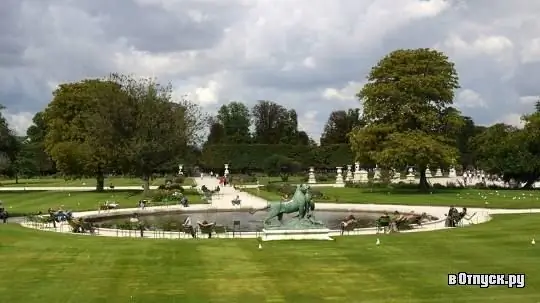
Description of the attraction
The Tuileries Garden lies in the heart of Paris between Place de la Concorde and the Louvre. This is the largest and oldest French-style park in the capital, a favorite walking place for Parisians.
Five hundred years ago, here, outside the walls of the Louvre Fortress, there was a suburb with a public dump. Clay was mined here for shingles, hence the name of the place (in French, clay - tuile).
The first park was built here in 1564 at the request of Catherine de Medici, it was in the Italian style. After another hundred years, Colbert decided to redesign the park, giving it a more national character. To do this, he invited the chief royal gardener André Le Nôtre, the creator of Versailles. Le Nôtre radically changed the appearance of the garden: he rebuilt the Seine embankment, which became an integral part of the Tuileries, arranged magnificent flower beds and pools, laid wide avenues that turned into the streets - Champs Elysees and Rivoli.
During the time of Louis XIV, the garden became accessible to the public. Benches, cafes and public toilets appeared in it. However, the king was more interested in Versailles, and the garden gradually fell into some desolation. In 1871, the Tuileries Palace located here died in a fire - it was burned by the Paris Commune, the building had to be dismantled.
The Tuileries was truly restored only at the end of the 20th century, during the reconstruction of the Louvre. In two identical buildings located in the western part of the garden, there is the Museum of Modern Art with a magnificent collection of Impressionists and the Orangerie with a Museum of 19th century art. Many marble and bronze statues from different eras can be seen in the park. Sculpture exhibitions are often held in the Tuileries - works by Rodin, Moore, Cragg were exhibited here in the open air. On the territory of the park, near the Carousel arch, there is a rich collection of Maillol sculptures.
The Tuileries is not only a cultural center, but also a great place to relax. The entrance to the garden is free, here you can take a traditional French iron chair for free and sit wherever and for as long as you like. There is a huge Ferris wheel for children with a wonderful view.






